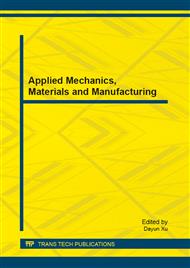p.318
p.322
p.329
p.335
p.340
p.346
p.350
p.355
p.362
The Defect Classification of TFT-LCD Array Photolithography Process via Using Back-Propagation Neural Network
Abstract:
This research is conducted mainly by using the Auto Optical Inspection (AOI) in the fifth generation TFT-LCD factory. In the development of detect-classification system, we designed the back-propagation neural network which combined with Visual Basic as the interface and MATLAB as an image-processing tool. The system is able to determine and display the detected results. The defect classification mainly designed to detect and classify the following defects: the second layer of the photo resist residue (AS-Residue), the second layer of large-area photo resist residue (AS-BPADJ), and the third layer of photo resist residue (M2-residue) in the Array Photolithography Process. Finally, the result is shown the fact that without the complicated processing procedures, the four defects in the TFT-LCD Array Photo Process can be precisely and quickly classified by imaging processing and back-propagation neural network training. As result, it is feasible to reduce the costs and the risk of human judgments.
Info:
Periodical:
Pages:
340-345
Citation:
Online since:
August 2013
Authors:
Price:
Сopyright:
© 2013 Trans Tech Publications Ltd. All Rights Reserved
Share:
Citation:


